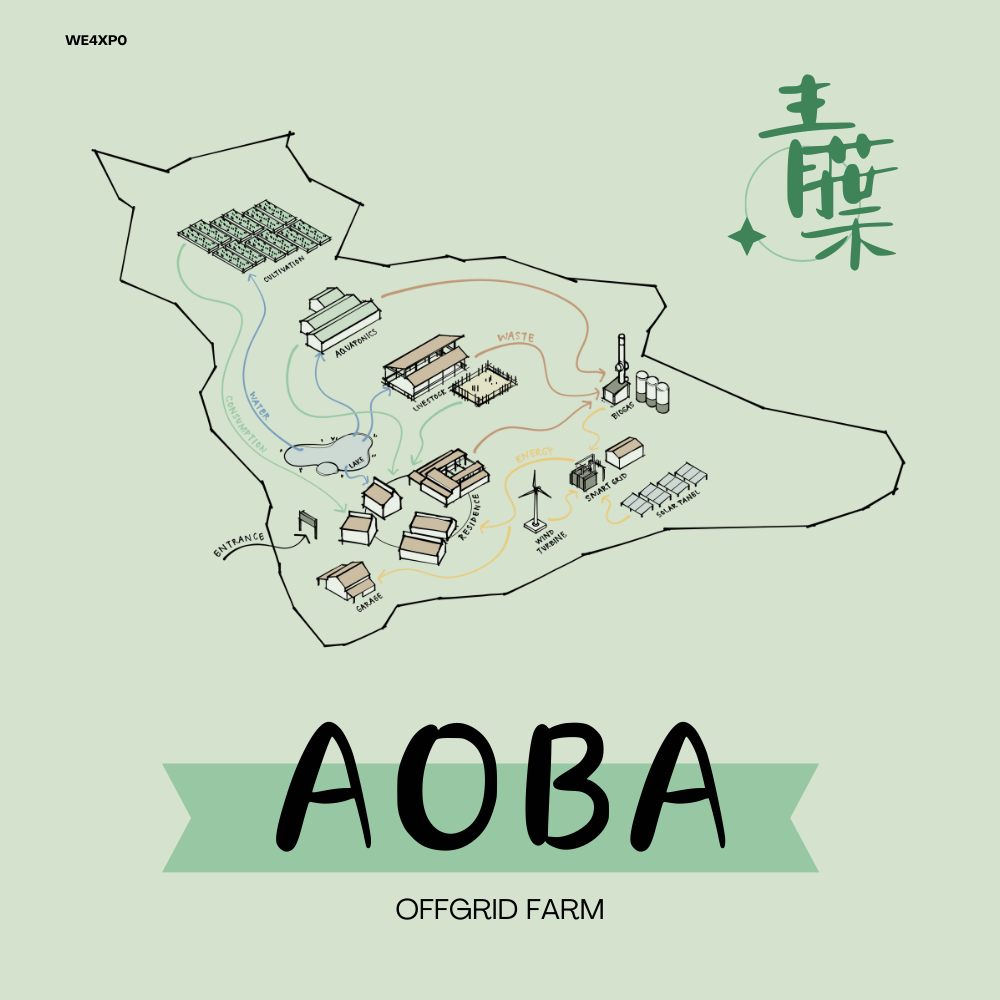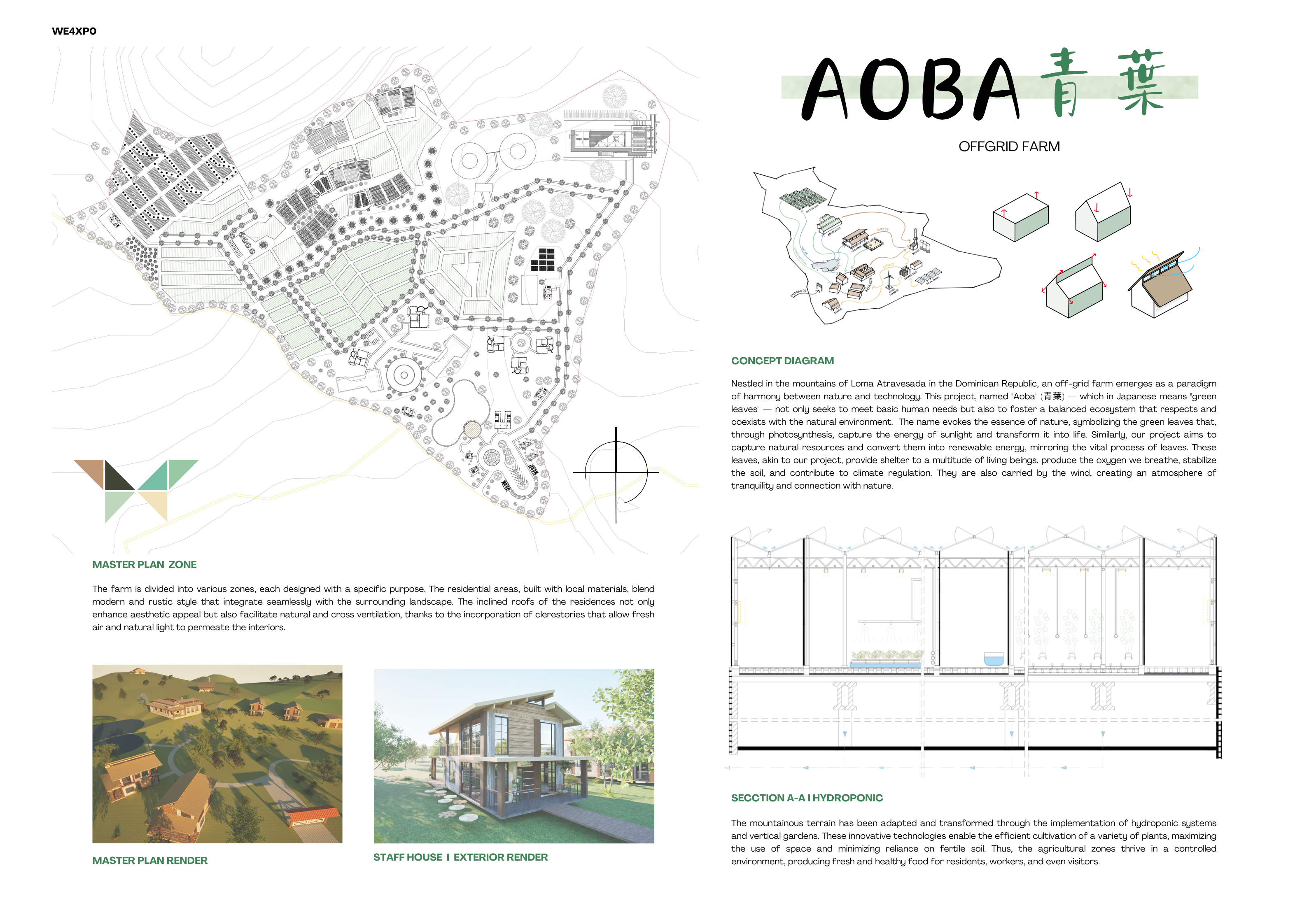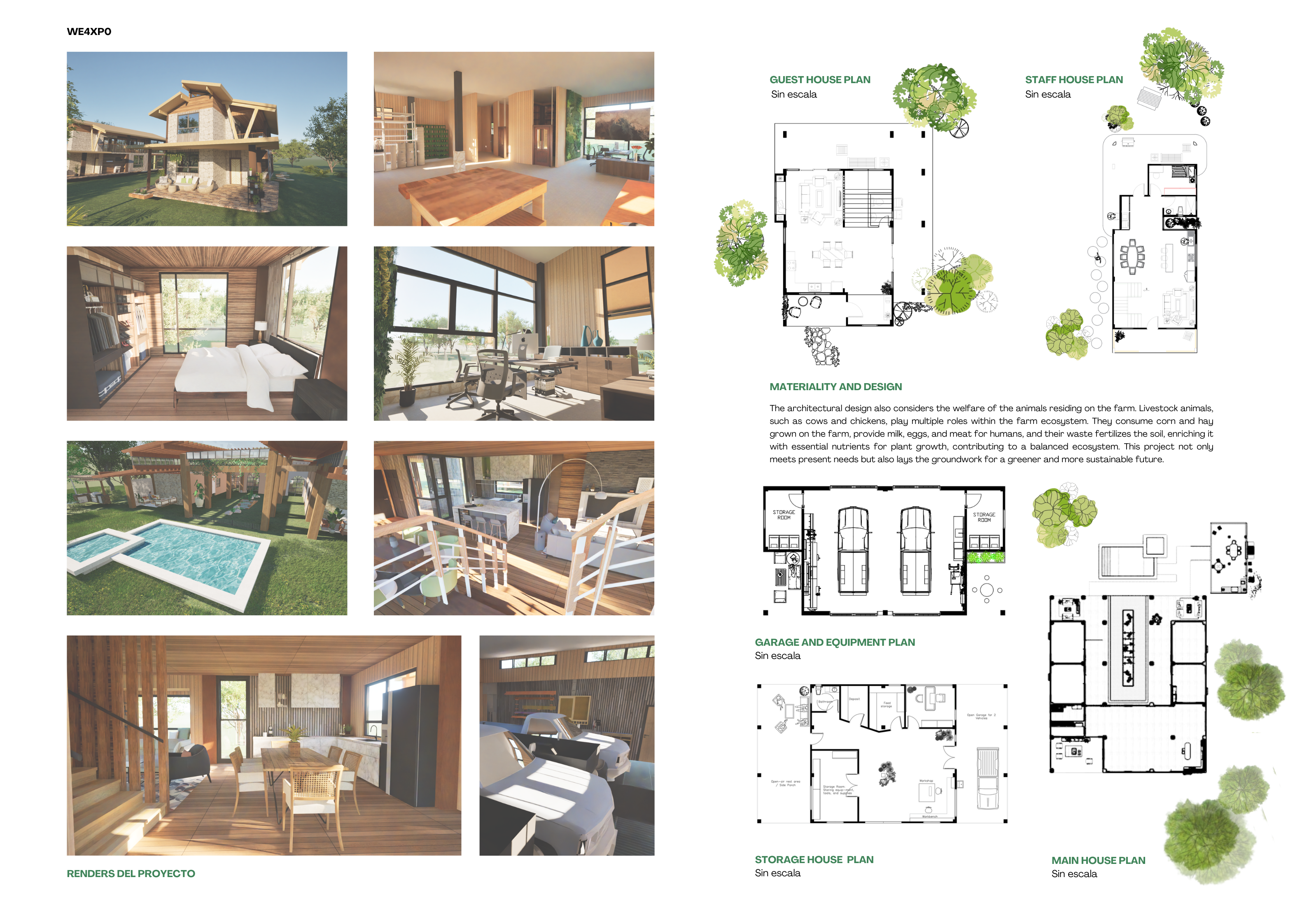
AOBA
Nestled in the mountains of Loma Atravesada in the Dominican Republic, an off-grid farm emerges as a paradigm of harmony between nature and technology. This project, named "Aoba" (青葉) — which in Japanese means "green leaves" — not only seeks to meet basic human needs but also to foster a balanced ecosystem that respects and coexists with the natural environment. The name evokes the essence of nature, symbolizing the green leaves that, through photosynthesis, capture the energy of sunlight and transform it into life. Similarly, our project aims to capture natural resources and convert them into renewable energy, mirroring the vital process of leaves. These leaves, akin to our project, provide shelter to a multitude of living beings, produce the oxygen we breathe, stabilize the soil, and contribute to climate regulation.They are also carried by the wind, creating an atmosphere of tranquility and connection with nature.
The mountainous terrain has been adapted and transformed through the implementation of hydroponic systems and vertical gardens. These innovative technologies enable the efficient cultivation of a variety of plants, maximizing the use of space and minimizing reliance on fertile soil. Thus, the agricultural zones thrive in a controlled environment, producing fresh and healthy food for residents, workers, and even visitors.
The farm is divided into various zones, each designed with a specific purpose. The residential areas, built with local materials, blend modern and rustic style that integrate seamlessly with the surrounding landscape. The inclined roofs of the residences not only enhance aesthetic appeal but also facilitate natural and cross ventilation, thanks to the incorporation of clerestories that allow fresh air and natural light to permeate the interiors.
An artificial lake, created to manage water resources efficiently, is complemented by a rainwater harvesting system. This lake not only provides water for daily needs but also offers a habitat for local fauna and a recreational space for farm inhabitants. Additionally, the installed biodigester manages waste and blackwater, transforming them into biogas and organic fertilizers, thus closing the waste cycle and promoting organic and sustainable agriculture.
To ensure energy self-sufficiency, the farm employs a combination of renewable energies. A solar panel array captures the sun's energy, while a wind turbine harnesses the wind to generate electricity. This diversified approach guarantees a constant supply of clean energy and reduces dependence on non-renewable sources.The architectural design also considers the welfare of the animals residing on the farm. Livestock animals, such as cows and chickens, play multiple roles within the farm ecosystem. They consume corn and hay grown on the farm, provide milk, eggs, and meat for humans, and their waste fertilizes the soil, enriching it with essential nutrients for plant growth, contributing to a balanced ecosystem. This project not only meets present needs but also lays the groundwork for a greener and more sustainable future.


